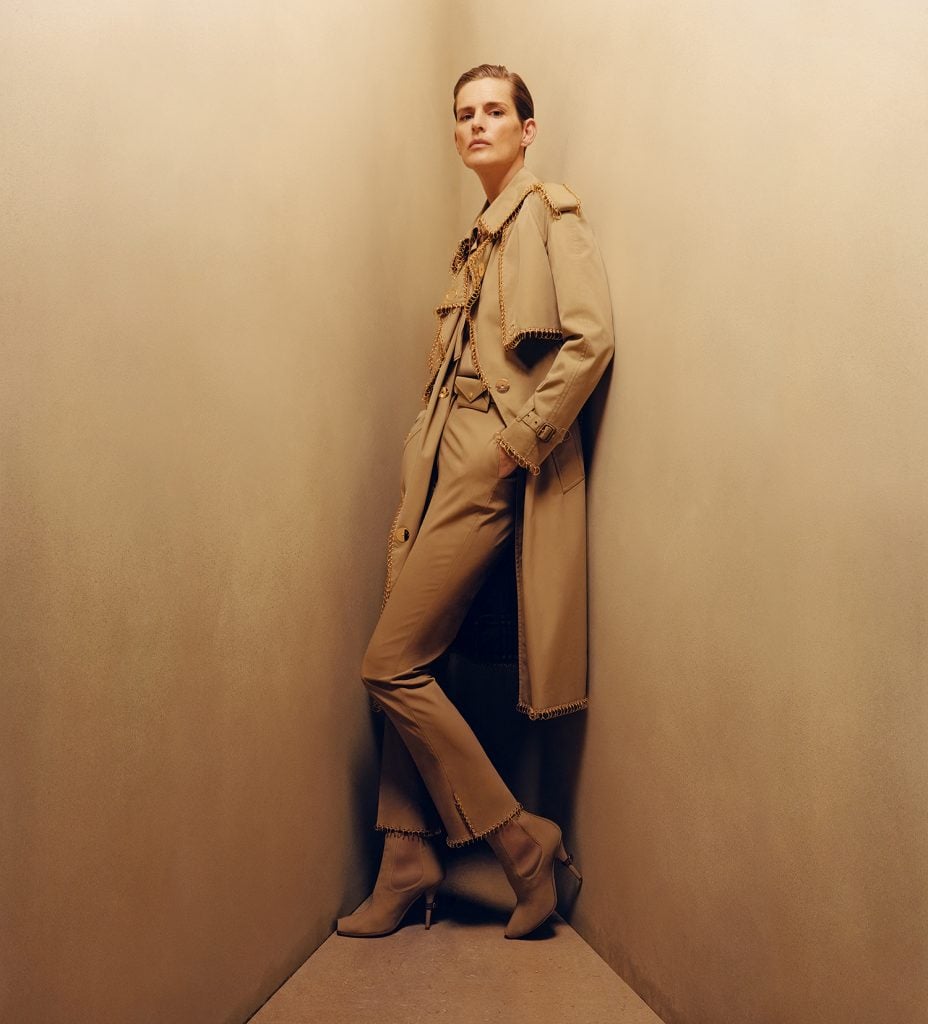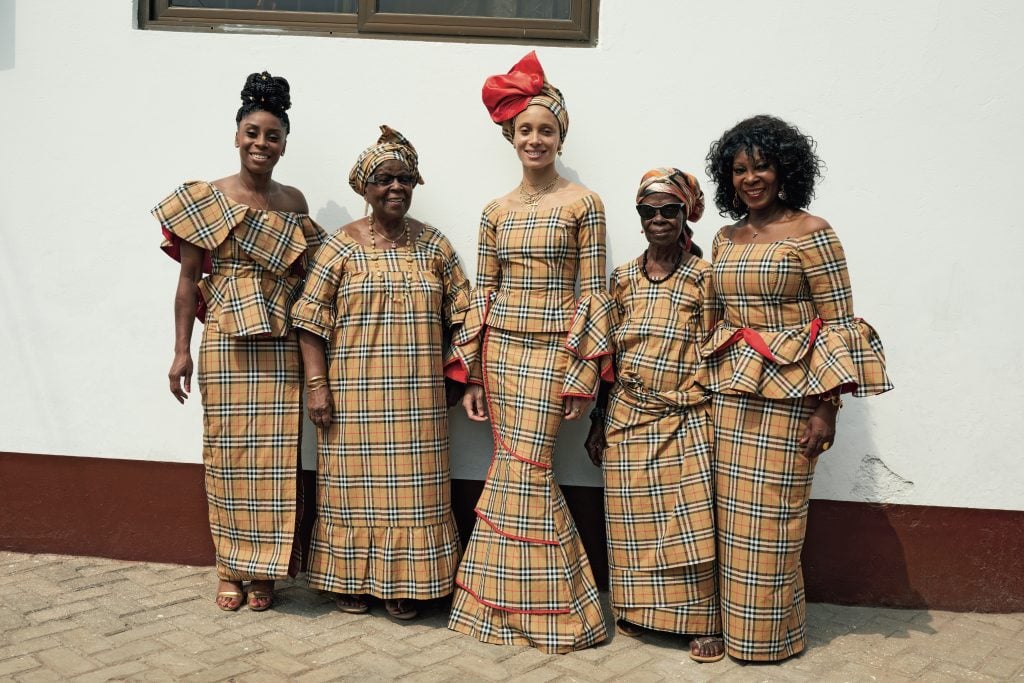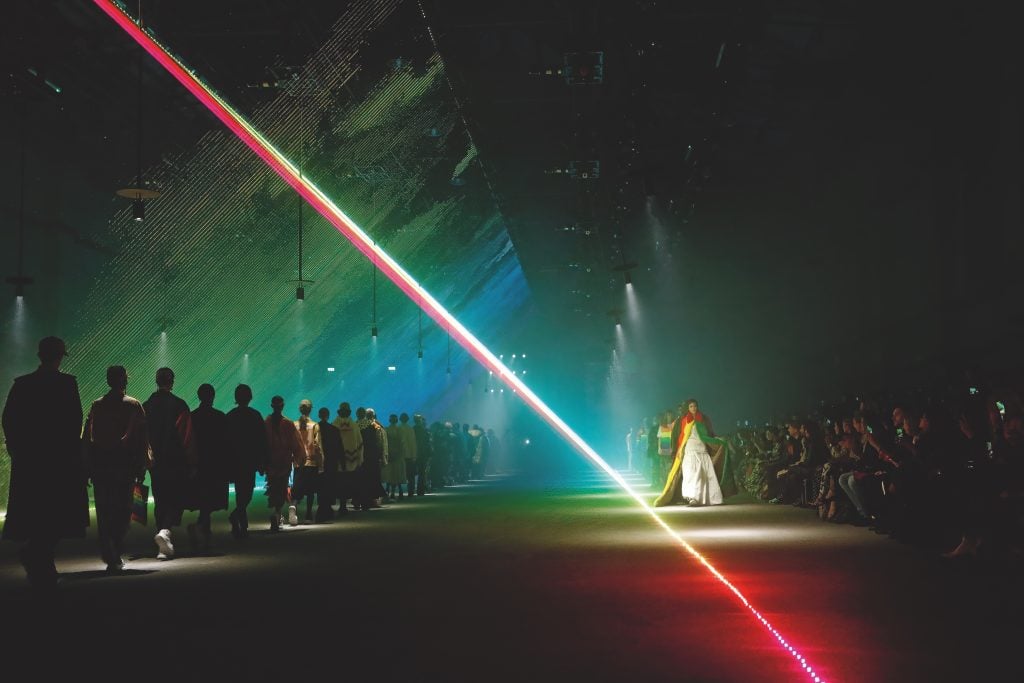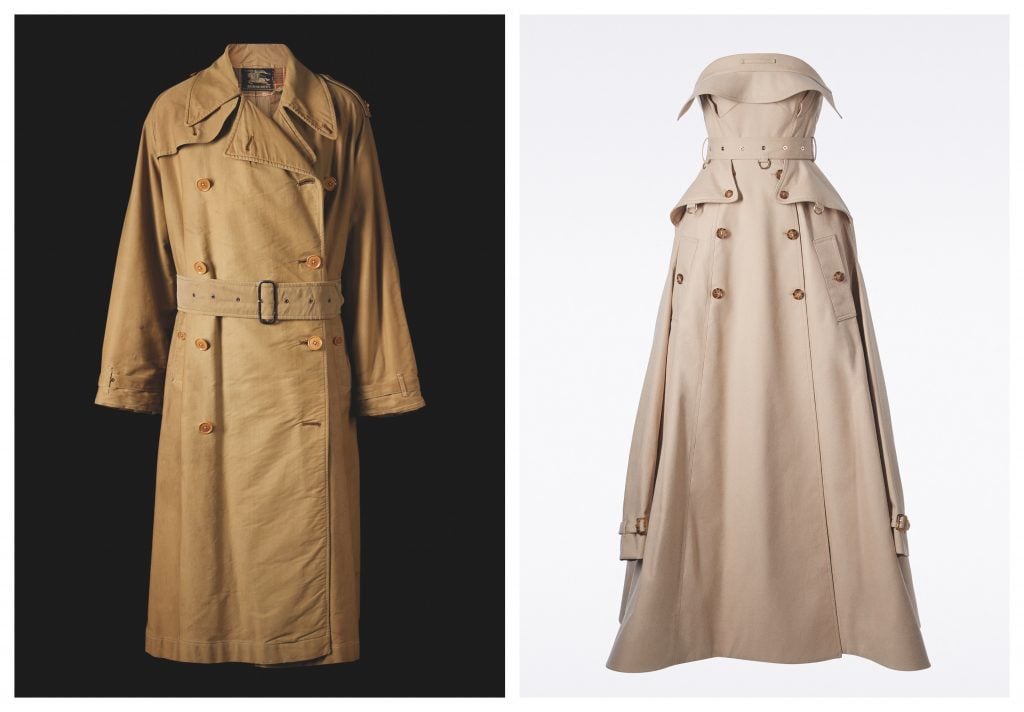A New Tome Documents the 165-Year History of Burberry, Tracing Its Rise From Trench Coat Purveyor to Global Powerhouse
Trench coats! That brown plaid! Britishness! Fashion! Burberry is steeped in its identity and codes. But if you ask someone to swiftly sum up the luxury brand, you’d get a slew of different responses. A new retrospective book proves that the gabardine pioneer is ever-evolving, and what truly defines it isn’t the iconic Burberry tartan. What links all its disparate eras is its beating heart of British eccentricity.

Burberry’s new creative director Daniel Lee channeled this dictum into his vividly brazen debut last month at the Fall 2023 shows in London. His nascent tenure is about the only thing left out of the 252-page tome Burberry (Assouline) which comes out today, and is available online and in Burberry and Assouline boutiques. The hardcover book features over 200 images and traces the brand’s almost 165-year existence, from its humble Basingstoke roots to its current apogee as the sole quintessentially British global fashion house. It certainly doesn’t skimp on khaki, either.

In his intro, the fashion journalist and critic Alexander Fury wrote, “Burberry has been inextricably entwined with British national identity, an institution to be cherished and championed. Burberry has clothed kings and queens, explorers and pioneers, heroes of every description, across the globe.”
For fans of Burberry’s modern iteration as a luxury fashion house, there is plenty of former creative director and CEO Christopher Bailey’s 17-year heyday. His revamp of the label coincided with London’s Cool Britannia zeitgeist. The Bailey period is oft-noted as a corollary for gangbusters business, but the book is a reminder that that acumen was also tied to a powerhouse creative vision (and edgy marketing aesthetic).

Lee’s immediate predecessor Riccardo Tisci gets surprisingly hefty documentation for his 2018–2022 reign. Throughout his incumbency, critics often dismissed him for being an odd fit for the heritage brand. But even at this short historical distance, the book proves he added some cool style swerves to the Burberry vernacular.
But before it was a fashion week stalwart, Burberry was a brand made not just to withstand the elements but to revel in them—clothes for British people to wear when they sought out even worse weather outside of their kingdom.

The Burberry story is one of innovation and not just style. At the dawn of the 20th century, it was the brand of choice for aviators and explorers like Ernest Shackleton. Action-packed ephemera from these expeditions, along with anachronistic advertisements, behind-the-scenes glimpses of savoir-faire, salvaged souvenirs, and heaps of images of trenches through the ages help define this hard-to-quantify brand.

Follow
Follow Artnet News on Facebook:
Want to stay ahead of the art world? Subscribe to our newsletter to get the breaking news, eye-opening interviews, and incisive critical takes that drive the conversation forward.






